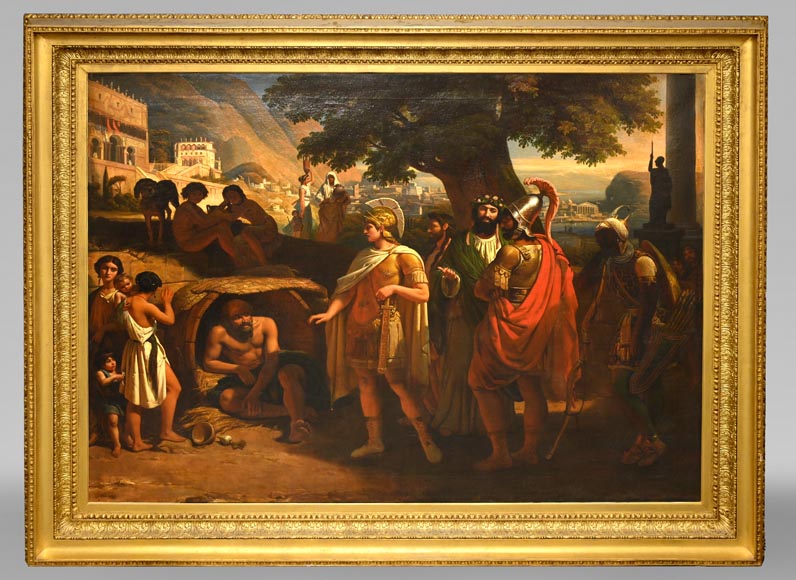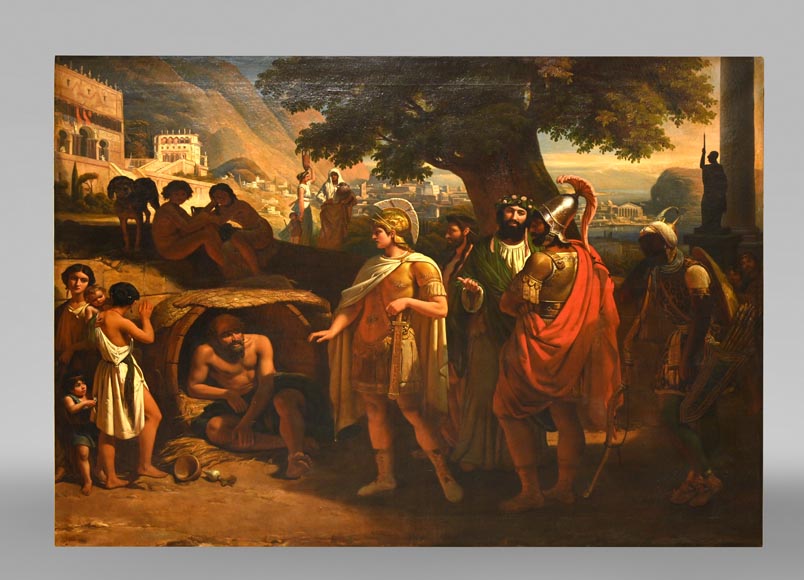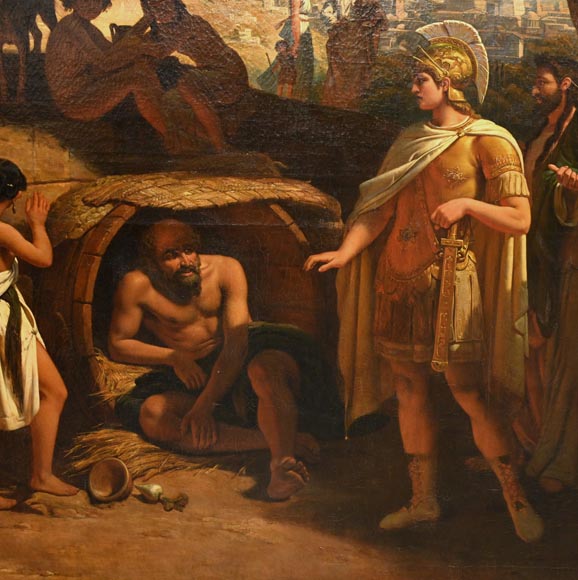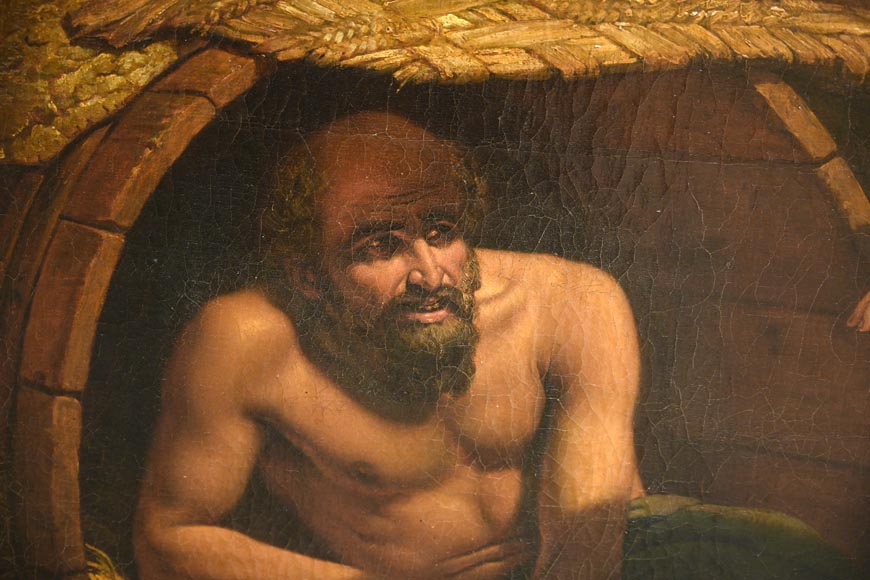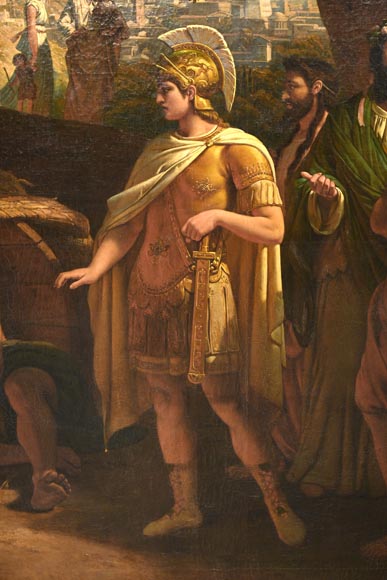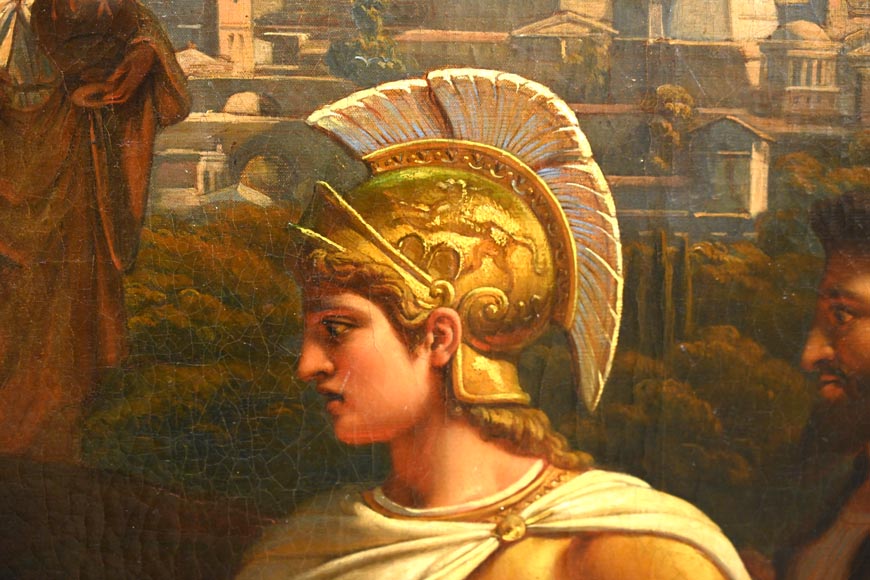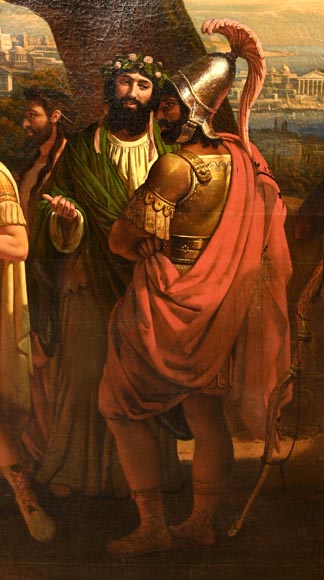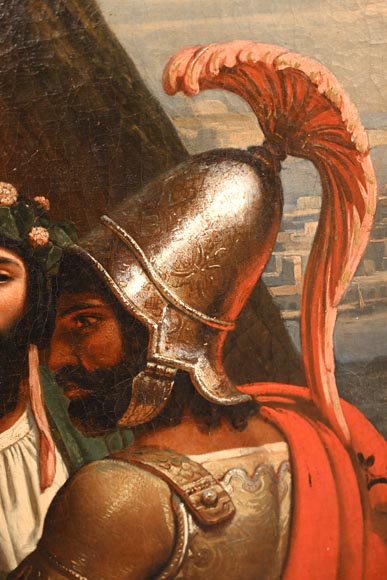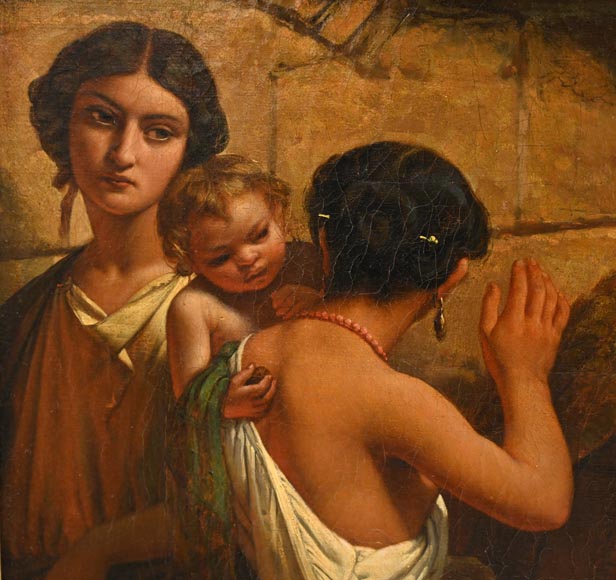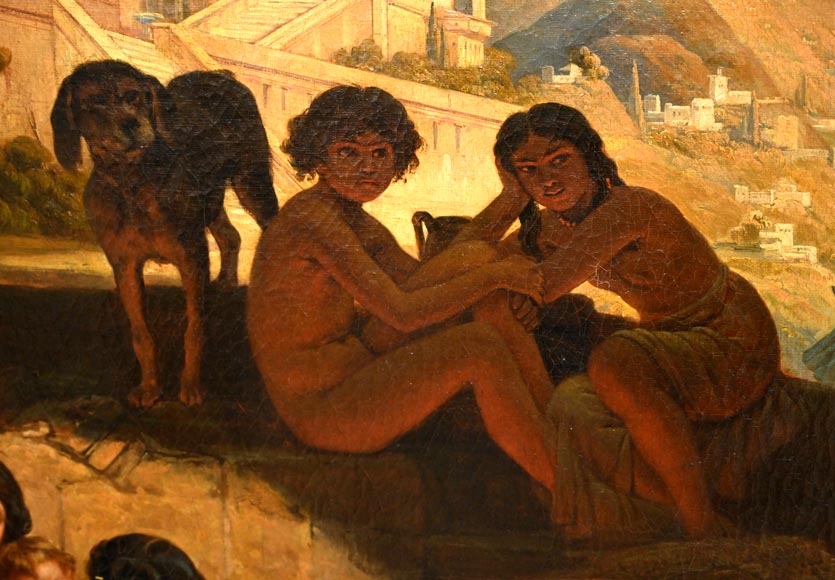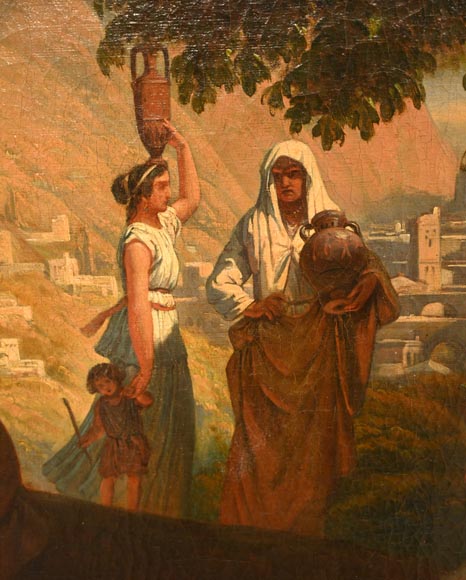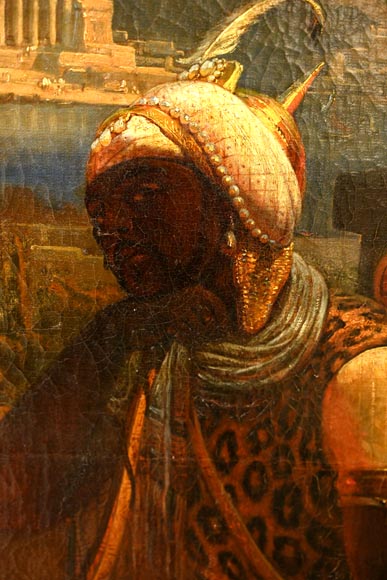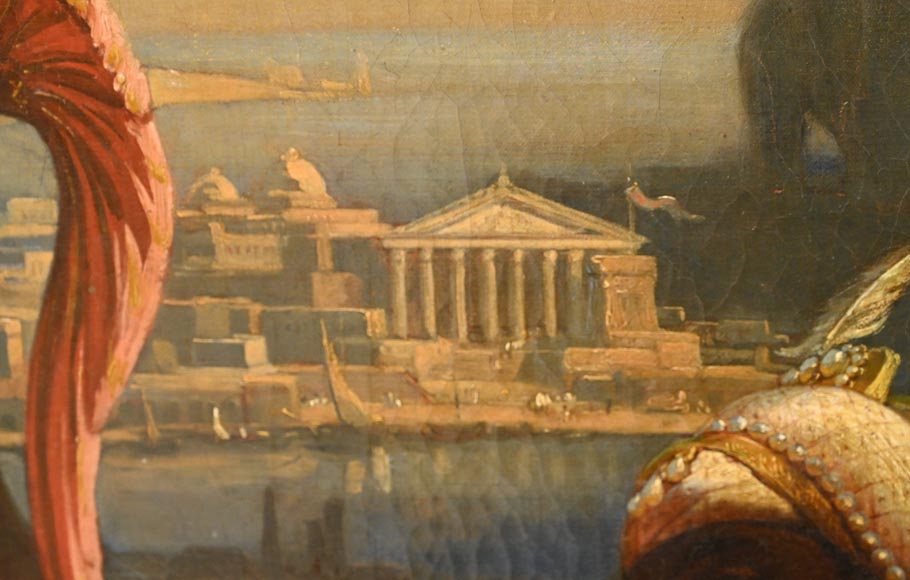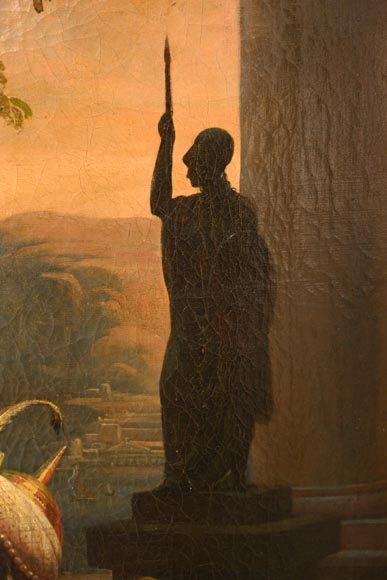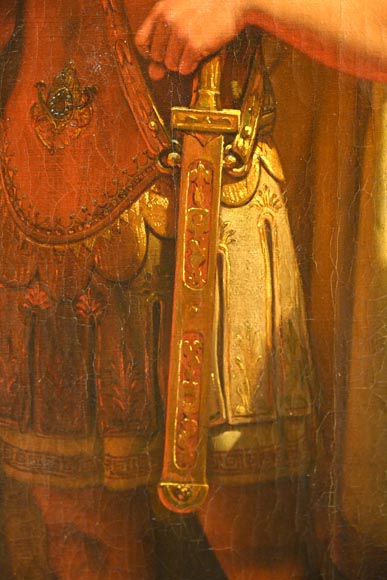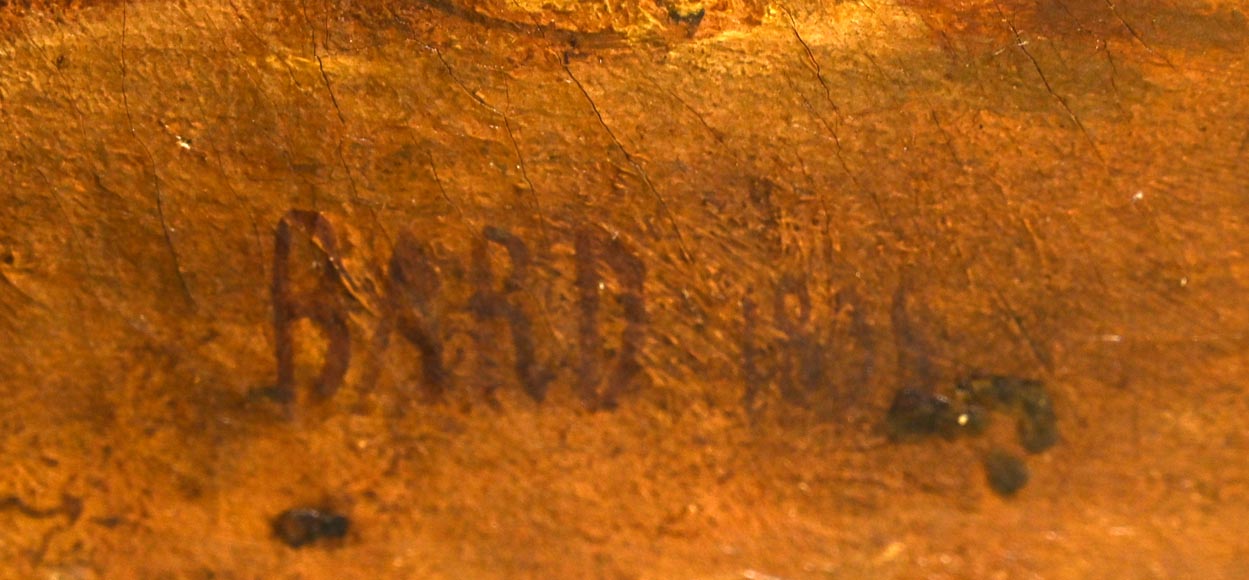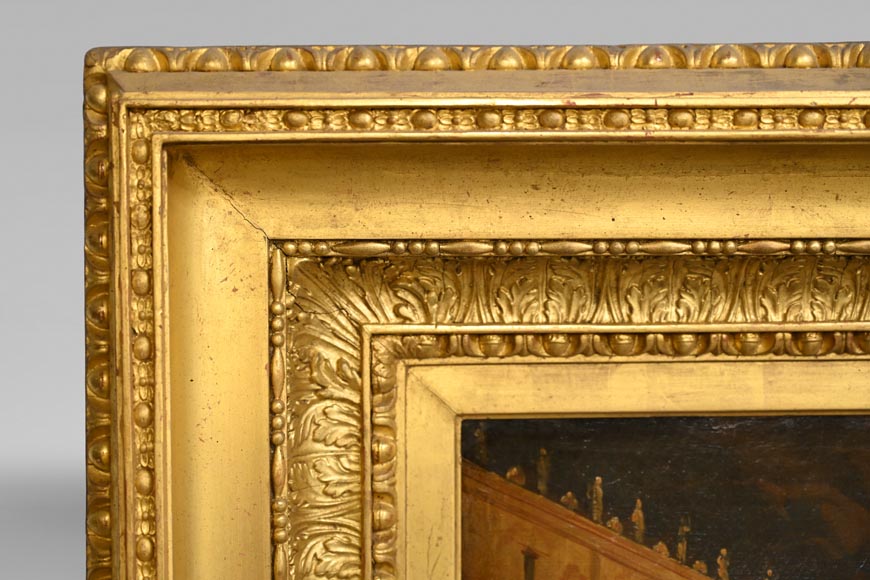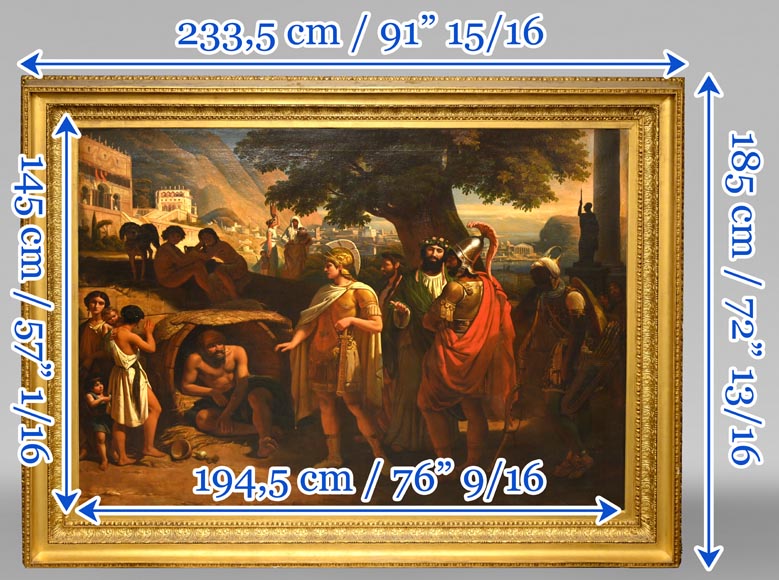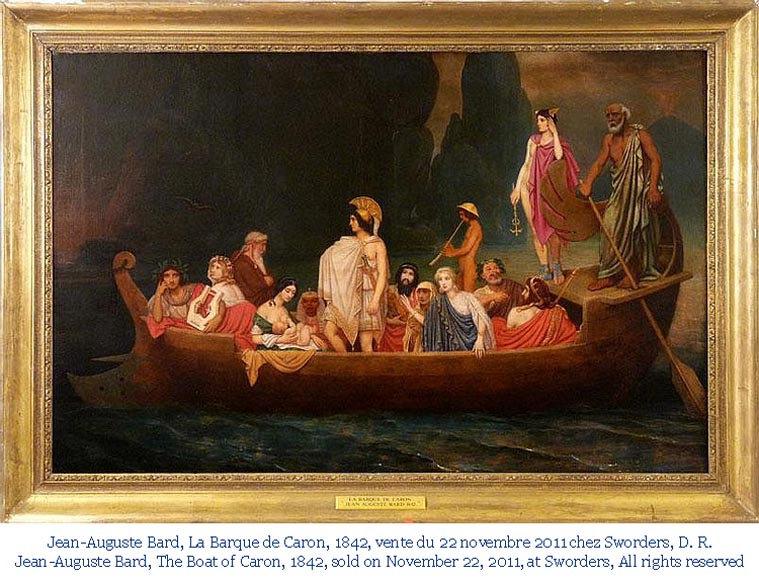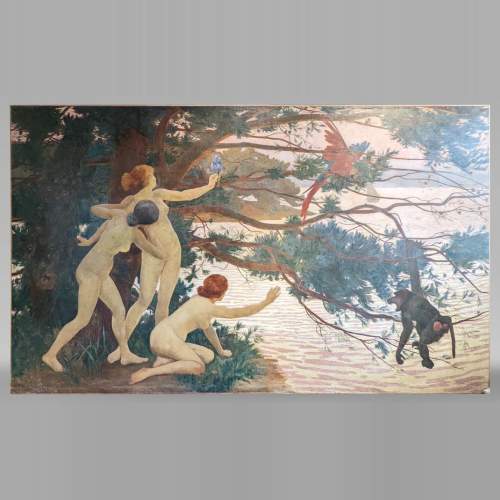Style Other / Ref.15400
Jean-Auguste BARD, Alexander and Diogenes, 1838, Salon of 1839
Dimensions
Width 92'' ⅛ 234cm
Height 72'' ⅞ 185cm
Depth: 4'' ⅜ 11cm
Origin:
France
This oil on canvas, painted by Jean-Auguste Bard in 1838, was exhibited at the Salon the following year, as entry number 81.
Jean-Auguste Bard (1812-1862) was a student of the renowned history painters Paul Delaroche and Jean Auguste Dominique Ingres. Himself a painter of historical and genre scenes, as well as a portraitist, Bard exhibited his works regularly at the Salons between 1831 and 1861. As he did not practice his art for financial reasons, he did not seek to sell his works, leaving most of his production to his family. However, the Louvre Museum acquired one of his paintings, and the museums of Pau and Montauban, along with the Palace of Versailles, hold some of his works in their collections.
The scene depicted here portrays the encounter between Alexander the Great (356 B.C.E.-323 B.C.E.) and Diogenes of Sinope (413 B.C.E-?), the famous Cynic philosopher who, according to legend, lived as a solitary beggar in a barrel. The emperor, a great admirer of Diogenes, visited him while passing through Corinth in 336 B.C.E. When Alexander offered to grant him anything he wished, Diogenes simply replied: “Step out of my sunlight”.
In the foreground, Alexander the Great, dressed in golden armor and a white chlamys, accompanied by his close companion Hephaestion, addresses Diogenes. The philosopher, depicted half-naked in his barrel, clearly lives in utter destitution. The shadow of the prince covers the lower part of his body, subtly referencing his famous response. Numerous other figures bear witness to the exchange between the two men.
The scene takes place outside the city of Corinth. On the left, an Orientalist-style palace symbolizes the mutual influence between East and West under Alexander’s reign. On the right, a Greek temple and a statue of Athena reference Corinth’s geographical location. The Greek world, where this historical episode occurred, is thus subtly and accurately evoked by the painter.
The encounter between Alexander and Diogenes inspired many artists: the painter Jean-Léon Gérôme (1824-1904) also addressed the subject in 1860 (Baltimore, Walters Art Museum). While Bard’s painting remains heavily inspired by the legend, Gérôme, striving for historical accuracy, depicted Diogenes in a large jar rather than a barrel, as barrels had not yet been invented during the philosopher’s time. Additionally, Gérôme surrounded the philosopher with dogs, referencing the nickname he was given.
Jean-Auguste Bard was particularly fond of subjects from ancient Greece. His near Neo-Greek style is also evident in his work Charon’s Boat, painted in 1842 and presented at the Salon of 1843.
Informations
Price: on request
Recommended for you :
Dimensions:
Width: 420
Height: 253
Depth: 3
Dimensions:
Width: 227
Height: 161
Dimensions:
Width: 178
Height: 129
Depth: 14
Dimensions:
Width: 77
Height: 110
Depth: 5
Dimensions:
Width: 65
Height: 195
Depth: 3
Dimensions:
Width: 117
Height: 90
Depth: 8
Dimensions:
Width: 102
Height: 82
Depth: 10
Dimensions:
Width: 162
Height: 295
Depth: 14
Dimensions:
Width: 86
Height: 108
Dimensions:
Width: 122
Height: 240
Dimensions:
Width: 67
Height: 95
Depth: 2
Dimensions:
Width: 71
Height: 100
Depth: 6



